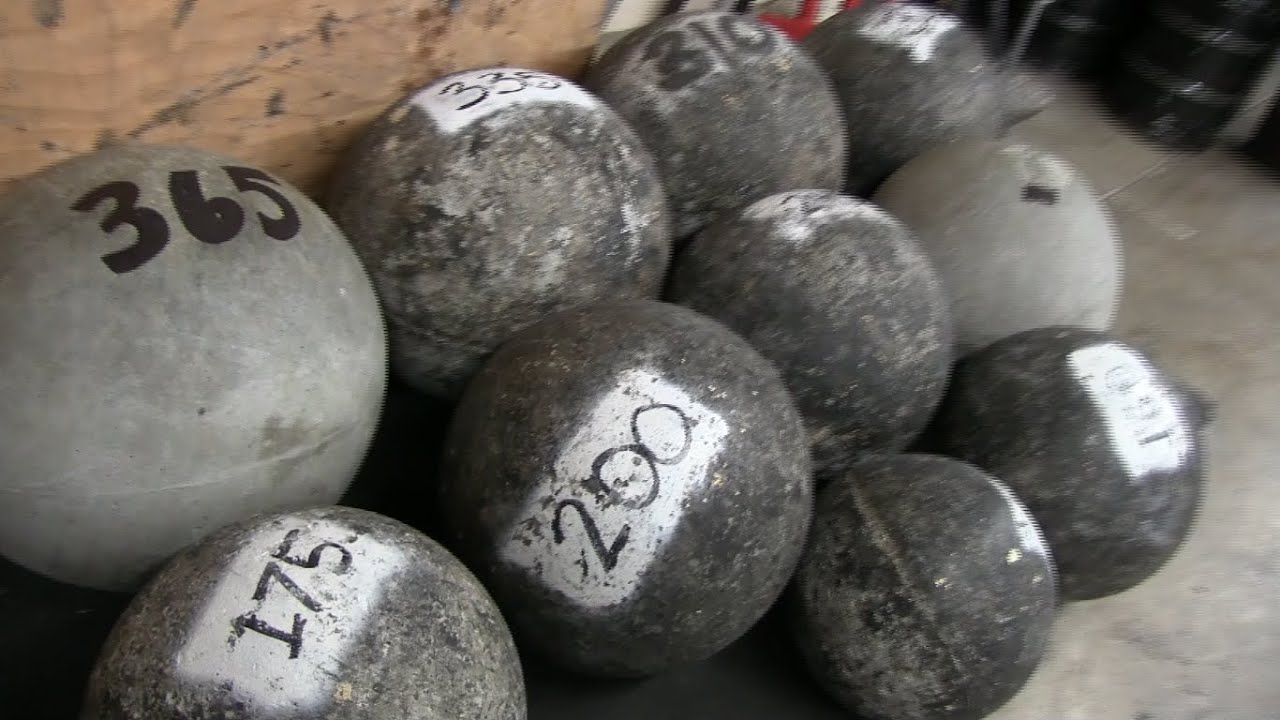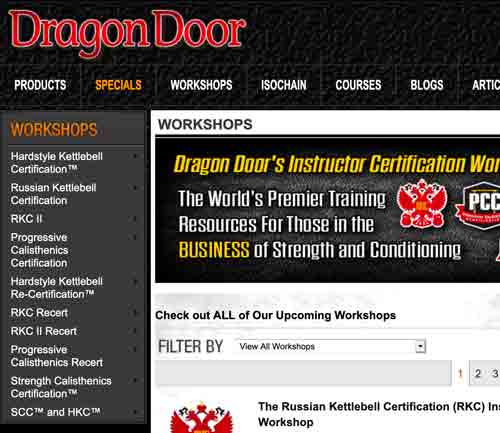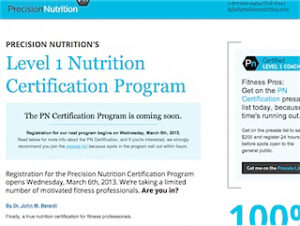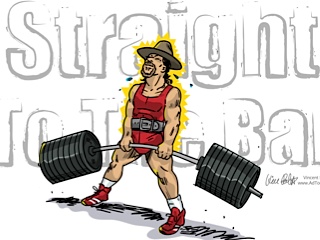
As Jim Wendler, Rick Walker and others have noted; traps maketh the man. Even if the rest of your body is comparatively small, huge traps are downright impressive.
In his article The Yoke, Wendler pointed out :
We live in a society that judges on physical appearance. Having big legs is ok, but no one notices. Big arms make you seem too narcissistic. A big chest makes you look like Captain UpperBody; a superhero no one wants to dress up like during Halloween. So that leaves the yoke as the essential body part to develop.
Besides which, a well-protected neck is always a good thing to have.
What is the yoke?

To a tailor measuring you up for a shirt (OK, imagine you’re getting married or something; you can’t wear t-shirts ALL the time), the yoke refers to the section from one shoulder to the other. Not around the back, but up and over the top. Bigger neck = bigger measurement.
To anyone who loves the iron, the yoke is simply the collection of muscles that sits around the neck and makes it look as though you’re permanently wearing one of those inflatable travel pillows. Those muscles help protect your neck from all sorts of damage (which is why you’ll often see footballers, wrestlers and MMA athletes working them seriously).
For a slightly more anatomical look at things, the yoke consists of :
Traps (Trapezius)
If the first exercise that came to mind when you read the word ‘yoke‘ was the humble shrug, join the club. Listed below are several other ways to hit the traps, but the shrug is at the top of the list for a good reason – it works.
The traps help with several movements of your arms above your head (picture the movement of a pull-up, for starters). The top shelf always gets a little harder to reach after a solid deadlift day.
Rear Delts (Posterior Deltoids)
These are simply the muscles at the back of the shoulders, and help to raise your arms behind you (think of a rear lateral raise).
Neck (Several muscles, all designed to rotate and tilt your head in various directions)
This probably brings to mind helmets, neck harnesses and formula one racing drivers (if that last one surprises you, think about the G-forces those guys are repeatedly subjected to as they go around corners). There are several muscles involved, but they have a common purpose : to help protect the cervical spine. And rotating/tilting the head of course.
The Exercises
-
 Barbell Shrug (Tom Mabey via DeFranco’s Training).
Barbell Shrug (Tom Mabey via DeFranco’s Training).Shrug (Dumbbell, Barbell or Trap Bar)
These are beautifully simple. The easiest way is to set a rack’s pins to a little below the bottom of your hands (when you’re standing up straight, with your feet about shoulder-width apart) and place your cheapest bar across them (it WILL get bent, so don’t use your new Buffalo Bar). Grab it with a double-overhand grip and lift it by raising your shoulders toward your ears; as if saying ‘I don’t know‘. Put it down again.
I’ve seen varying advice regarding the position of your head during this. Personally, I always tilt my head forward (stretching out the back of my neck); looking straight ahead at the same time. As a side benefit, you won’t look particularly approachable whilst you’re in the middle of a set. -
 Farmer’s Walk (Mike Johnston via EliteFTS).
Farmer’s Walk (Mike Johnston via EliteFTS).Farmer’s Walk
As exercises go, this isn’t a difficult one to grasp (although performing it with a lot of weight just may be). Start with two heavy objects of similar weights on the ground by your sides, pick them up and go for a walk. It really doesn’t matter what they are; dumbbells, sandbags, barbells and trapbars are all fairly common. For Strongman competitions a pair of ‘Farmer’s Walk Implements’ (essentially a pair of extra-large dumbbells) is generally used.
Another popular variation of this exercise is the Inman Mile. For this, walk a mile (1.6km) carrying two objects (or one, across the shoulders) totalling 1.5 x your bodyweight. As the many dents in my lawn signify, this is more difficult than it sounds. -
 Hise Breathing Shrug.
Hise Breathing Shrug.Hise Breathing Shrug
Joseph Curtis Hise has a lot to answer for. Yes, he’s often considered to be the ‘Father of American Weight Training‘, and was a large factor in the popularity of the ‘deep knee bend‘ back in the 1930s; but he also came up with the brutal 20-rep breathing squats and this – the Hise Breathing Shrug.
This is a great shrug variant; unfortunately the associated pain means it’s a rarely performed exercise these days. Shame really, because it’s brilliant.
Set the bar up as if you’re about to perform squats. Position yourself under the bar just the same, grab the bar as-per-usual and shrug. That’s all there is to it.
An alternative version – if you find the above version too painful, or if the squat rack isn’t available – is to perform them on a standing calf raise machine. The movement’s exactly the same. -
 Power Shrug.
Power Shrug.Power Shrug (sometimes called Jump Shrug)
Think of these as shrugs with a bit of leg involvement. Start with the bar in the rack as per standard shrugs, grab it with a double overhand grip and bend the knees slightly. Rapidly straighten your legs (you’d jump off the ground if not holding a heavy bar) and shrug at the same time. The leg involvement will just make it easier to get the bar moving.
NB : The idea is to let the traps do most of the work; the leg action just adds a few pounds to the bar. -
 Derek Boyer locking out 1,030lb.
Derek Boyer locking out 1,030lb.Deadlift Lockout
These are really just very high rack pulls. Rather than setting the pins to the appropriate height to deal with a sticking point, set them to within a few inches of the top of the movement.
As with shrugs, a double overhand grip and high reps are the order of the day. I usually frown on the use of straps, but if you’re going to use them at all; this is the time.
A simple variation is to move the hands out wider on the bar (still with a double overhand grip); to what’s known as a Snatch Grip (watch a bit of Olympic Weightlfting, and you’ll quickly see why). Although this reduces the weight you can lift, it compensates by increasing the trap involvement. -
 Wife carrying, Estonian style. Photo by Steve Jurvetson..
Wife carrying, Estonian style. Photo by Steve Jurvetson..Put something heavy on your back and walk.
According to legend, Milo used a cow. Pavel Stupin preferred a horse. Whatever it is, putting something heavy on your back and going for a walk is a great exercise for a number of muscle groups; including your traps. Try it with a loaded barbell, a sandbag or even a helicopter. -
 Upright Row.
Upright Row.Upright rows
Keep the weight modest for these. They’re simplest to perform using a barbell (although there are some unusual alternatives) or a short bar such as an EZ Curl.
Start with the bar in front of your thighs (once again holding it with a double overhand grip, shoulder-width or less). Leading the movement with your elbows, lift it to neck height and return. You should feel this in your lateral delts, several parts of your neck and back, and forearms (there’s a fair bit of wrist action here). -
 Bradford Press.
Bradford Press.Bradford Press (sometimes called Rainbow Press)
This is a great one for all-around shoulder development. Begin with a military press, then carefully bring the bar down behind the head. Reverse the movement, and lift the bar up over the head and pause back at the starting point. That’s one rep. Curse and repeat.
The exercise is named for US Olympic Weightlifter Jim Bradford. Bradford had the reputation of being able to press any weight to was able to clean; and after a few sets of these, you’ll understand why. -
 Monkey Row (just add dumbbells).
Monkey Row (just add dumbbells).Monkey Row
These are fun, and aptly named. Hold a pair of fairly light dumbbells at your sides. Bring your arms up to your armpits, and return them under control. Repeat.
NB : Dancing around the gym making funny noises is entirely optional. -
 Bubba performing a 210lb neck lift.
Bubba performing a 210lb neck lift.Direct neck work
Last, but by no means least, direct neck work. This may be in the form of a weighted helmet, neck harness, neck machine or just holding a plate to your head (as this isn’t the exercise to go testing your 1RM on, the smaller plates are probably enough).
The concept is simple : tilt your head forward and push it back against your chosen form of resistance, tilt back/push forwards and tilt to each side/push to the other side. These are often performed – particularly with manual or plate resistance – lying down. For the other options just make sure the rest of your body is stable; usually seated.
Mini workout
In today’s luxurious 30 minutes of free time I managed to squeeze in a few sets of the abovementioned deadlift lockouts and shrugs :
Deadlift Lockout (double overhand, no gear) : 2×20@60/135, 2×20@100/225, 2×10@140/315, 2×5@180/405
Shrug (double overhand, no gear) : 20@100/225, 16@100/225 (grip gave way)
Looks like an extra dose of grip work is on the cards.
Final thoughts
Whilst these aren’t the only exercises that will help give you the fearsome appearance that only a massive neck can bring, they should certainly be at the core of any serious neck-building routine. In addition to the usual mix of squats, deads and Olympic lifts that is.
Further reading
For more great shrug varieties, pick up a copy of Kelso’s Shrug Book. A great read.
Also for your fitness library : The Trap Chronicles. Exactly what the name suggests.











0 Comments
Trackbacks/Pingbacks